When most people think of gardens, they likely imagine a neatly trimmed lawn with a few strategically placed bushes and flowers. But what if you want something more? What if you’re longing to create a true garden paradise – complete with a rose garden? Don’t worry, it’s not as hard as you might think. This article will answer all of your questions about rose gardens, including how to design them, care for them, and even choose the right roses for your climate.
What are popular rose sorts for the garden?
Many different types and varieties of roses can be grown in the garden, ranging from shrub roses to climbing roses. Some popular rose sorts for the garden include:
Floribunda Roses: These bushy, evergreen plants produce clusters of flowers throughout the growing season.
Hybrid Tea Roses: Also known as tea roses, these are tall plants with large blooms that come in a range of colors.
Ground Cover Roses: This type of low-growing rose is perfect for the borders and edges of pathways. They usually bloom profusely during spring and summer and vary in color, size, and shape.
Shrub Roses: These vigorous growers have beautiful double blooms and many different varieties are available.
Climbing Roses: Perfect for growing up walls, trellises, and arbors, climbing roses have long canes that need training and pruning regularly to maintain their shape.
Old Fashioned Roses: These classic roses come in a variety of colors and usually bloom once or twice during the summer months.
Miniature Roses: These tiny plants produce small but charming blooms that last all season long.
No matter which type of rose you choose to grow, they can make a beautiful addition to any garden! With proper care, these stunning flowers will continue to provide vibrant color throughout the year [1].
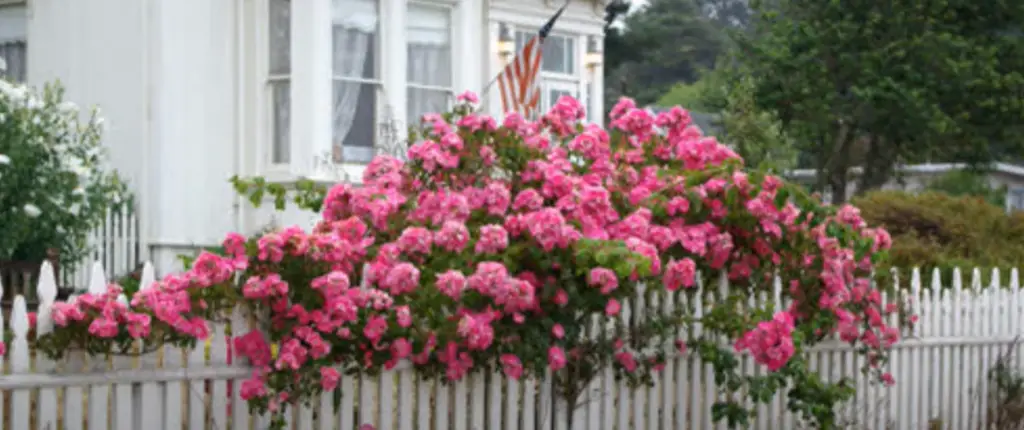
6 Easy Steps for Growing a Romantic Rose Garden
Choose wisely the rose bush
The first and most important step in creating a romantic rose garden is to choose the right type of roses. There are many types of roses, from wild roses to hybrid tea roses, so it’s important to consider which variety will best suit your needs and fit into the desired theme of your garden. Consider factors such as size, hardiness, and color when choosing which variety will be best for your space.
Pick the perfect location
Once you have chosen the perfect type of rose for your garden, it’s time to decide where you will plant it. Roses need at least six hours of sunlight each day and should be planted in soil with good drainage. Keep in mind that some varieties may require more water or fertilizer than others.
Gather the necessary supplies
Before planting your rose garden, you will need to gather all of the tools and supplies that are needed for the job. These include a shovel or trowel, pruners, gloves, stakes if necessary, mulch or compost, soil amendments, fertilizer and water.
Prepare the soil
Once you have gathered all of the necessary supplies it’s time to start preparing the soil in which you will plant your rose bushes. Roses like well-draining soil with plenty of organic matter added in so it might be wise to add some compost or mulch before planting. Additionally, make sure to check pH levels and adjust as necessary.
Plant the roses
Now it’s time for the fun part: planting your rose bushes. When planting, make sure to dig a hole twice as wide and deep as the root ball of your bush and leave at least two feet of space between each one. After placing the bush into the hole, backfill it with soil and water thoroughly.
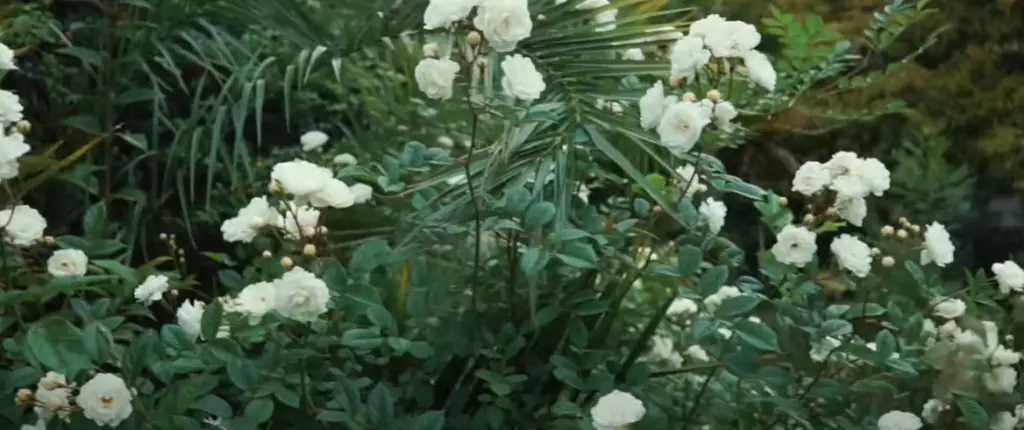
Care for your roses
After all of that hard work, it’s important to make sure you give your roses the love they need to thrive. This includes regular watering, fertilizing (especially in spring), pruning, weeding, and mulching. With a little bit of effort, you can have a beautiful rose garden blooming all summer long [2]!
Create a rose garden in different types of spaces
Large rose garden
A large rose garden is a great way to show off the beauty of roses while creating an eye-catching display in your yard. To create a successful rose garden, you’ll need plenty of space and sunlight. Start by selecting an area with good soil and at least 6 hours of direct sun. Make sure to choose varieties that will thrive in your climate, as this will determine how well they grow and bloom.
Once you’ve chosen the spot, it’s time to start planting! Add rich organic matter to the soil before adding fertilizer and mulch. Planting roses in groups of three or five will give them enough room for growth and make for an impressive visual effect. Finally, provide plenty of water throughout the growing season; weekly deep soaking is ideal.
Small rose garden
If you don’t have a lot of space for a large garden, you can still create an eye-catching display with a small rose garden. Select dwarf varieties that require minimal pruning and are suited to your climate, such as shrub roses or patio roses. Choose an area in full sun with well-drained soil and add organic matter before planting. Space plants at least two feet apart to give them enough growing room; groupings of three or five work best in smaller spaces. Provide weekly deep watering and be sure to feed regularly with a balanced liquid fertilizer throughout the growing season. With proper care and maintenance, your mini rose garden will be brimming with beauty!
Hanging rose basket
Hanging baskets are a great way to add color and fragrance to any space, indoors or out. Select a hanging basket with plenty of drainage holes, and line it with sphagnum moss before adding potting soil. Choose trailing varieties such as climbing roses or rambling roses which will spill over the sides for an eye-catching display. Plant several small plants in the basket and secure them in place; groupings of three work best for this type of garden. Place your hanging basket in bright indirect light, water frequently, and feed weekly with a balanced liquid fertilizer. Enjoy the beauty of blooms all season long!
Front yard rose garden
A front yard rose garden is a great way to add visual interest and curb appeal to your home. Select an area in full sun; raised beds are best if you’re planting on uneven ground. Add organic material to the soil before planting, and make sure to use varieties that thrive in your climate. Plant roses at least two feet apart; groupings of three or five will create a more impressive visual effect. Water deeply throughout the growing season; weekly soaking is best. Feed regularly with liquid fertilizer, and provide support (such as stakes) for tall varieties.
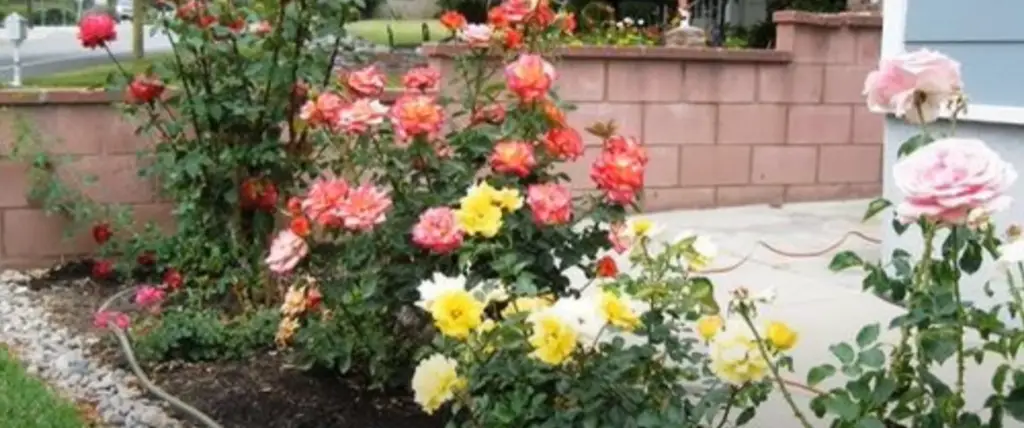
Container Rose Garden
If you have limited space but still want to enjoy the beauty of roses, consider creating a container garden! Choose dwarf varieties and make sure they are suited to your climate. Select large containers with plenty of drainage holes, and fill them with potting soil. Plant several small plants in each pot; groupings of three or five work best. Place containers in bright indirect light, water deeply regularly, and feed monthly with a balanced liquid fertilizer. Enjoy the sweet scent and stunning color all season long!
Backyard rose garden
A backyard rose garden is a great way to add color and fragrance to your outdoor space. Start by selecting an area with good soil and plenty of sunlight; at least 6 hours per day is ideal. Choose varieties that thrive in your climate, as this will determine how well they grow and bloom. Add organic matter to the soil before planting and mulch for added protection. Plant roses two feet apart, with groups of three or five for a more impressive visual effect. Provide weekly deep soaking throughout the growing season, feed regularly with liquid fertilizer, and provide support (stakes, trellises) for tall varieties. Enjoy the beauty of blooms all season long [3]!
Rose garden landscaping tips
Grow vertically
When it comes to designing the landscape in a rose garden, vertical gardening is a great way to make use of limited space and add visual interest. Climbing roses can be trained up trellises and walls, while shrubs are easy to prune into interesting shapes. Growing vertically also brings blooms closer to eye level so that their beauty can be enjoyed more easily.
Create focal points
Focal points bring drama and diversity to any garden design. A statement piece such as an arbor or gazebo surrounded by tall hedges of roses creates an inviting entrance for visitors. A bench or fountain tucked away in a shady corner provides a tranquil place for relaxation or contemplation. You can also use unique containers such as large pots or window boxes to draw attention to certain areas in your garden.
Grow horizontally
If you have more space to work with, consider creating a meandering path through your rose garden. This will draw visitors’ eyes from one area to the next and give them plenty of opportunities to explore. Low-growing roses such as groundcover varieties are perfect for creating winding paths or borders. For an even more dramatic effect, incorporate different colors and shapes by combining different types of plants along the way.
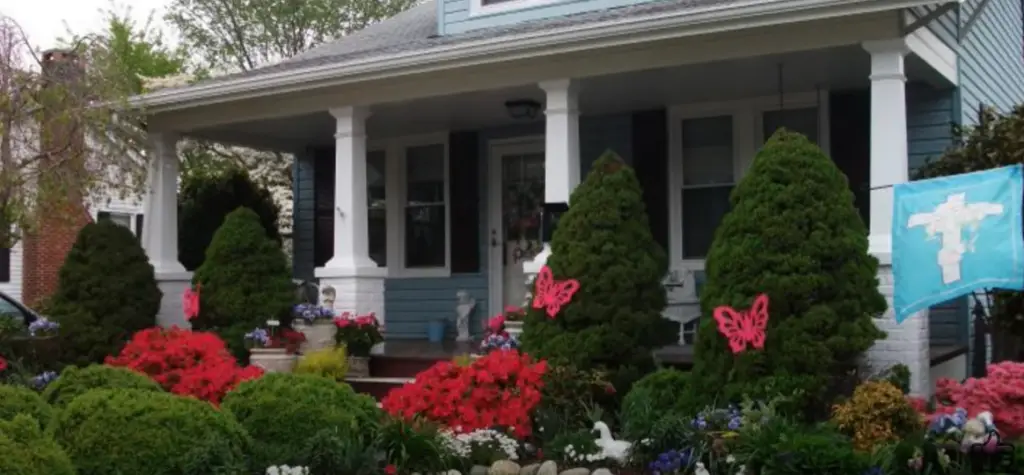
Cover a slope
Sloping hillsides can be challenging to landscape, but roses are perfect for filling in the gaps. Plant climbing roses along a fence or wall to create a cascading effect that adds texture and depth to your garden. Or plant low-growing shrubs at different heights so that they cascade down the slope, creating an amazing visual effect. Just remember to anchor them with stakes and trellises so that they don’t get washed away during heavy rains.
Plant in drifts
Grouping roses in large drifts or cascades will create a unified look and also showcase the beauty of each rose. A great way to achieve this is by mixing different colors, sizes, and types of roses. For example, try planting tall shrubs with shorter groundcovers, or mix climbing roses with ramblers for a stunning effect.
Plant a hedge
Hedges are a great way to add structure and privacy to your garden. They also make great backdrops for other features, such as walkways or flower beds. When it comes to selecting plants for your hedge, look for dense-growing varieties that will provide plenty of coverage with minimal pruning. Roses are ideal for this purpose since they grow quickly and produce beautiful blooms throughout the season.
Make an entrance
Give your garden a grand entrance with an arbor or pergola. Plant climbing roses along the sides of the structure to create a lush canopy, and add other plants such as clematis or wisteria for even more visual interest. If you don’t have space for an arbor, you can also create an inviting entryway using large containers filled with colorful flowers.
Create a transition
Transitions are important in any garden design, and roses are a great way to create smooth transitions between different elements. Plant low-growing groundcover varieties along pathways or borders to form an attractive transition between lawns and flower beds. Or use tall shrubs to break up hardscapes such as patios or driveways. Finally, you can also use hedges to define boundaries between different sections of the garden.
Foundation planting
Foundation planting is a great way to add charm and character to your home. Plant tall shrubs or climbers around the edges of your house for an attractive, low-maintenance alternative to traditional landscaping. Roses are also perfect for creating a lush border along pathways or driveway entrances.

Rose garden ideas
Plant roses as hedging or en masse
One way that you can use roses in your garden is to plant them as hedging or en masse. The traditional English rose hedge consists of a row of different kinds of roses, usually with a tall evergreen shrub at the back such as laurel or box, then shorter and more colorful varieties in front combined with some ground cover plants, like spreading ivy. Planting roses en masse will give a stunning effect to any garden. Consider planting one variety for an elegant look, or use two contrasting colors for added interest.
Create fragrant pathways
The fragrance is often overlooked when it comes to designing gardens but adding scented plants around pathways can add an extra dimension. Roses are ideal for this as each type has its own unique scent. Plant species roses along pathways to produce a light and airy aroma, or choose more musky varieties for a sensuous feel.
Create rose-covered arches
Rose-covered arches can provide an attractive feature in any garden. Choose climbing varieties such as ramblers and climbers that have been specially bred for archways, or opt for larger shrubs if your arch is particularly tall. Train the roses up onto the frame of the arch, allowing them to cascade down either side of it once they’ve reached the top. Prune regularly so that your roses keep producing fresh blooms throughout the growing season.
Grow edible roses
Roses are not just beautiful, but some types are also edible too! Try planting some of the more unusual varieties such as the yellow ‘Julia Child’, red ‘Rosa rugosa’, or pink ‘Helen Chadwick’ rose. All of these are Hardy and can be used in salads, desserts, and drinks to add a floral flavor to your dishes. For example, rose petals can be used to decorate cakes and cookies, or added to salads. The hips of the roses can also be made into jams, jellies, syrups, and even tea!
Create a wild meadow
If you’re looking for a more natural design for your garden, why not create a wild meadow? Plant species roses such as ‘Soulmate’, ‘Munstead Wood’ or ‘Souvenir de la Malmaison’ in combination with other grasses and flowers. These plants will attract pollinators and provide an area of color and scent throughout the summer months. Keep the area watered regularly until it is well established then let nature take its course, enjoying the beauty of a wild meadow in your garden.
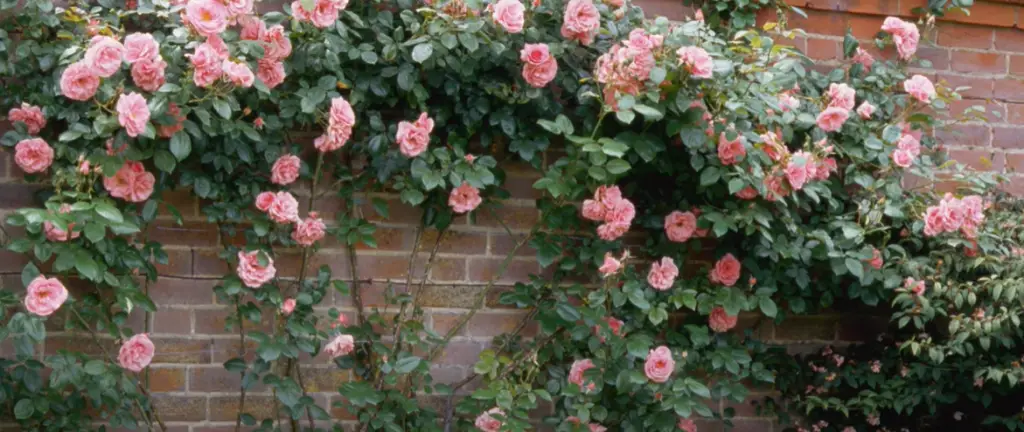
Incorporate roses into water features
For a unique twist on a traditional garden feature, incorporate roses into your water feature. Plant different kinds of water-resistant roses around the edges to create a beautiful backdrop for any pond or fountain. These will provide stunning color when in bloom, as well as help to oxygenate the water and attract wildlife. Alternatively, why not try planting them in planters filled with water and use them to create a cascading effect?
Grow miniature roses
Miniature roses can be grown in containers or planted directly into the ground, making them ideal for smaller gardens. These dainty plants will provide all the beauty of their larger cousins but in a fraction of the space. Plant several different colors together for maximum impact, or grow single varieties on either side of paths or doorways for a pretty entrance to your garden. Miniature roses also make great houseplants – simply keep them well-watered and placed in bright, indirect light for best results.
Combine with other perennials
Roses look fabulous when combined with other perennials and annuals. Try planting some in combination with lavender, clematis, or perennial geraniums for a stunning display throughout the summer months. Alternatively, you can use them to create a beautiful focal point in your garden by planting varieties of contrasting colors and sizes around an existing structure or feature. Whatever design you choose, roses will add a touch of elegance to any garden.
Grow roses through a tree
For a truly unique statement in your garden, why not try growing roses through a tree? Choose hardy varieties such as ‘Rosa banksiae’ or ‘Rosa multiflora’ which will tolerate some shade and can be trained up around a mature tree trunk. This is an unusual way to add color and interest to your garden and will provide you with beautiful blooms for years to come. Using these simple tips, you can create stunning displays of roses throughout your garden.
Grow a rose garden over a seating area
Roses make a beautiful addition to any seating area in the garden. Plant fragrant varieties such as ‘Climbing Iceberg’ or ‘Mme Alfred Carriere’ near benches and chairs, creating an intimate seating area surrounded by their sweet scent. You can also grow trailing roses over arches or pergolas, al- For even more impact, incorporate climbing roses into your design. Plant varieties such as ‘New Dawn’ or ‘Zephirine Drouhin’ on either side of a trellis or fence, al- lowing them to cascade down either side of it once they’ve reached the top.
Pair roses with lavender for a cottage garden feel
Roses and lavender are a classic combination for a cottage garden. Plant varieties such as ‘Lavendula angustifolia’ or ‘Lavendula stoechas’ with roses like ‘The Fairy’ or ‘Gertrude Jekyll’ to create a stunning display of both color and scent. This is an easy way to bring the beauty of the English countryside into your own garden, no matter how big or small it may be.
Use rambling roses to soften garden walls and structures
Rambling roses can be used to soften hard garden walls and structures. Plant varieties such as ‘Paul’s Himalayan Musk’ or ‘Henry Hudson’ at the base of a wall or fence, allowing them to climb up and over it. As well as adding beauty and scent, these vigorous climbers can also provide some much-needed privacy in your garden [4].
What to plant with roses?
Roses are beautiful flowers, and they make a lovely addition to any garden. While roses look great by themselves, you can also combine them with other plants to create an even more vibrant display of color and texture. Here are some suggestions for what to plant with roses:
Lavender – These fragrant blooms are the perfect companion plant for roses, as they feature similar shades of purple or pink in their petals and attract beneficial pollinators like bees. Lavender likes a lot of sun and blooms in late spring through early fall.
Daylilies – These bright yellow-orange flowers will add a joyful pop of color against the backdrop of your rose bush. They require full sun and thrive in moist, well-draining soil.
Hostas – These shade-loving plants will add a unique texture to your garden. They have large leaves with variegated colors and thrive in partial shade or full sun.
Alyssum – This low-growing ground cover features white, pink, or purple blooms that are sure to bring cheery color to the bottom of your rose bush. It prefers sunny spots and moist, well-drained soil.
Vinca vine – This fast-growing evergreen vine is perfect for covering trellises and chain link fences around your roses. It has glossy green leaves and bright purple flowers, and it loves full sun or partial shade [5].
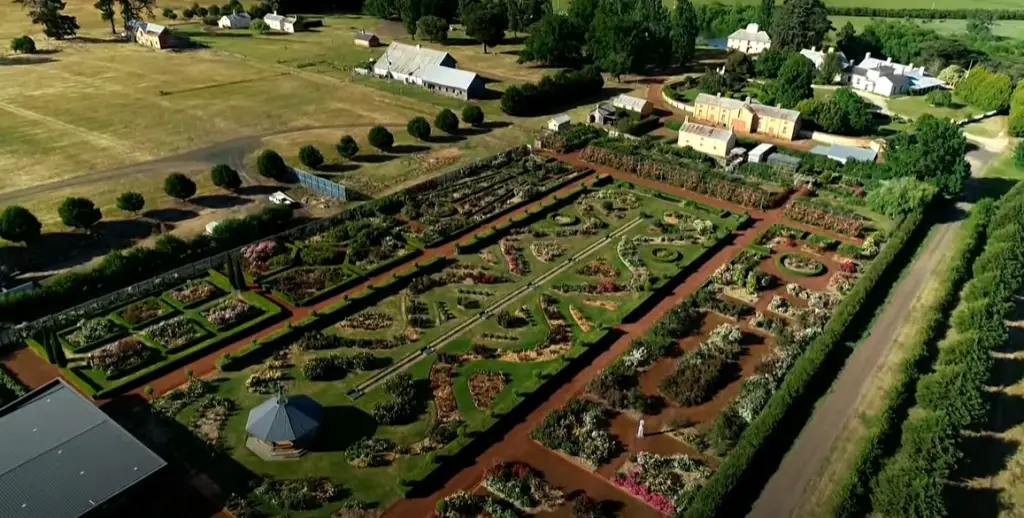
FAQ
How to make a rose garden?
Creating a rose garden is an enjoyable way to make the most of your outdoor space and enjoy beautiful blooms. To start, plan out your garden area and decide where you want to plant your roses. Choose a sunny spot in your yard that will get at least six hours of sunlight per day. Once you’ve chosen the perfect spot, prepare the soil by tilling it deeply and adding compost or fertilizer.
Dig holes in the soil for each rosebush and place them at least two feet apart for adequate air circulation. Plant each bush according to its directions, backfilling with soil as you go along. Water thoroughly after planting, then provide regular supplemental water during dry spells throughout the growing season. Prune regularly after flowering has finished, and fertilize each spring with a balanced fertilizer. With regular attention and care, your rose garden will be flourishing in no time!
What are the best roses for beginners?
The best roses for beginner gardeners are shrub roses such as Hybrid Tea Roses, Floribunda Roses, or Rugosa Roses. These types of roses are vigorous growers that require little pruning and are known for their hardiness and disease resistance. They also come in a variety of colors, so you can easily find one to match your garden’s design. For even more experienced gardeners, Climbing Roses make a great addition to any garden space.
How do you prepare the ground for a rose garden?
To prepare the ground for a rose garden, start by tilling the soil deeply with a spade or garden fork. This will help break up any large clumps of dirt and allow air to circulate throughout the soil. Then add organic matter such as compost or peat moss to increase the nutrient content of the soil. Finally, mix in a balanced fertilizer before planting your roses to give them an extra boost of nutrients. Be sure to water thoroughly after planting and mulch around each bush to help retain moisture and keep weeds away.
Useful Video: 10 Rose Garden Ideas
Conclusion
Rose gardens are a great way to add beauty and charm to any outdoor space. They can easily be incorporated into any garden, no matter the size or shape. With proper care and attention, rose gardens can provide years of enjoyment for all who visit. From classic hybrid teas to modern climbers, there is something for everyone in a rose garden. Whether you want to create a romantic atmosphere or simply enjoy the sight of colorful blooms, there’s sure to be something perfect for your landscape.
References:
- https://www.gardeningchores.com/types-of-roses/
- https://www.countryliving.com/gardening/garden-ideas/tips/a5140/grow-rose-garden/
- https://www.gardendesign.com/roses/
- https://www.homesandgardens.com/ideas/rose-garden-ideas
- https://www.thespruce.com/companion-planting-for-roses-1403041#





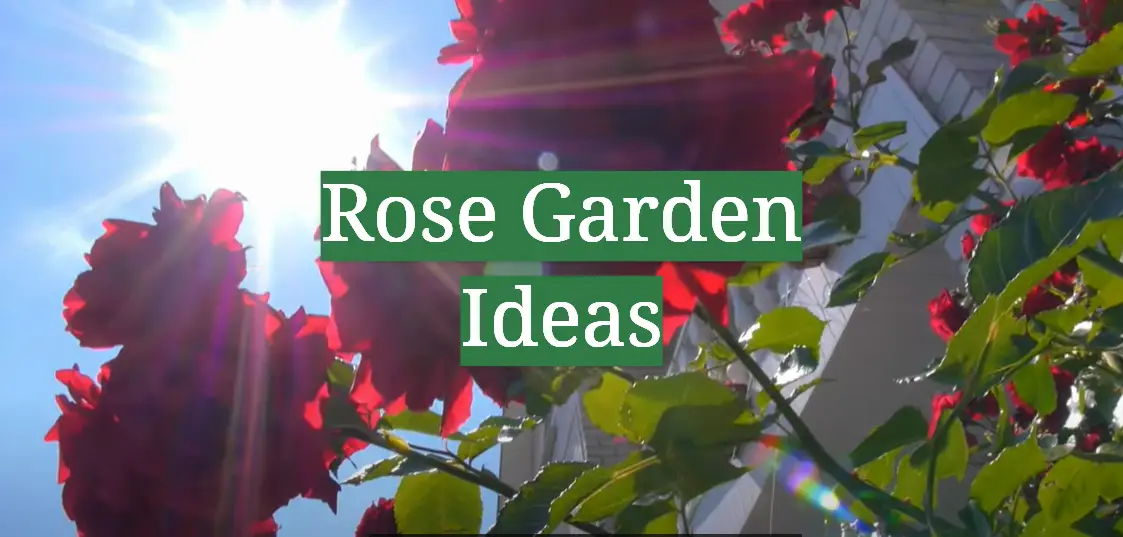




Leave a Reply
View Comments